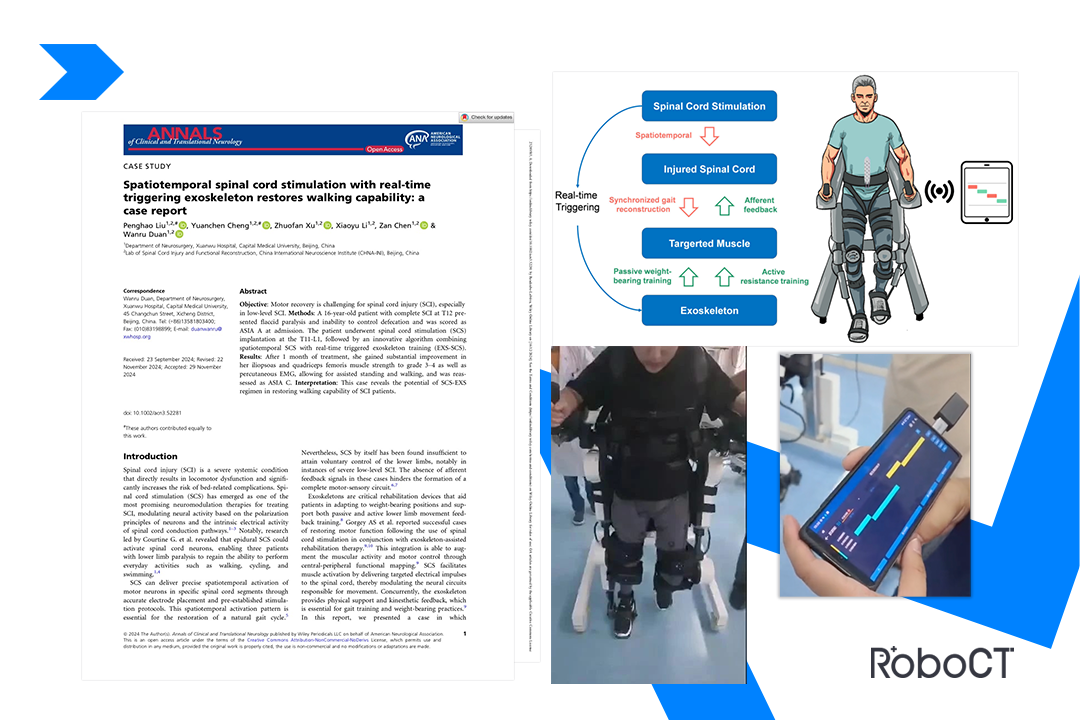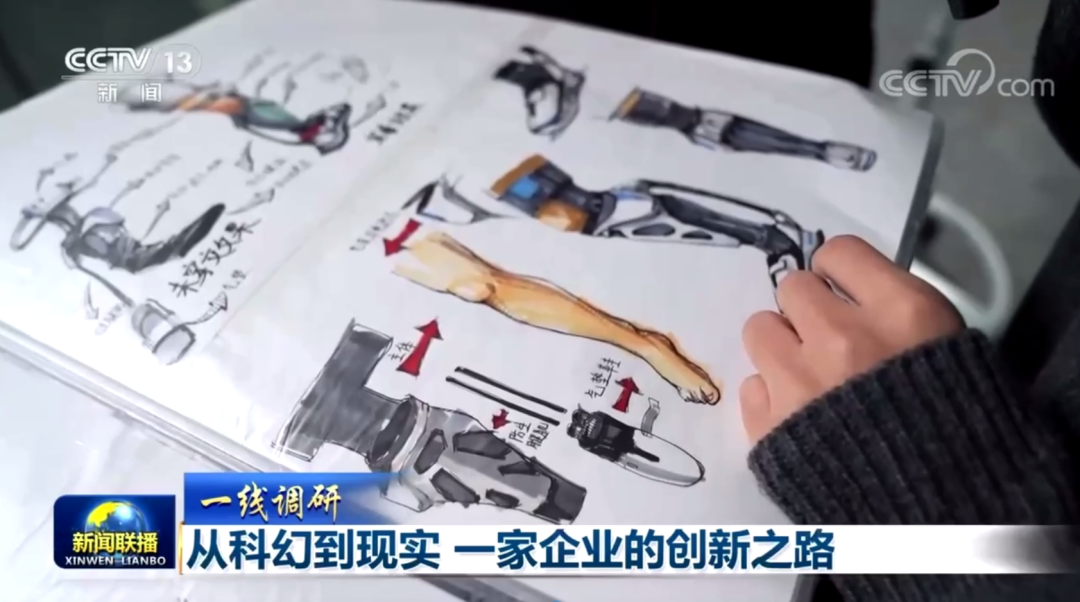Case Report of Time-Sequenced Spinal Cord Electrical Stimulation Combined with Exoskeleton Training was Published in ACTN Journal
Release time:2024-12-20
Related article

Recently, a case report of “Spatiotemporal Spinal Cord Stimulation with Real-time triggering Exoskeleton Restores Walking Capability”, completed by DUAN Wanru's team from Department of Neurosurgery, Xuanwu Hospital, Capital Medical University, was published in the journal Annals of Clinical and Translational Neurology. The xase report reveals that spatial and temporal sequences of spinal cord stimulation with a rehab exoskeleton can restore walking capability, which shows great potential of an innovative algorithm combining spatiotemporal sequencing with an exoskeleton robot (EXS-SCS) to restore walking ability in patients with spinal cord injury (SCI).
The case was treated by precise activation of damaged neurons through electrical stimulation and post-operative walking training with gait analysis, which is a fusion therapy approach using RoboCT Technology's lower-limb rehab exoskeleton. The close collaboration between the Department of Neurosurgery at Xuanwu Hospital of Capital Medical University and RoboCT Technology has enabled this innovative technology to move quickly from the lab to clinical application.
With the publication of this case report, it will promote the dissemination of spinal cord injury rehabilitation cases, provide new perspectives and methods for the field of rehabilitation therapy, and inspire more researchers to devote themselves to the study of spinal cord injury and jointly explore new ways of spinal cord injury rehabilitation; it will also provide a reference for the future clinical practice, and push forward the development of related technology and treatment methods. With the deepening of interdisciplinary cooperation and the continuous innovation of therapeutic methods, it is expected that more advances will be realized in the field of spinal cord injury rehabilitation, bringing more hope and possibilities to patients.
 Being Reported on CCTV-13 News Programme Zhao Wen Tian Xia ! Experiencing RoboCT Technology's Rehab Exokeleton!
2025-02-08
Being Reported on CCTV-13 News Programme Zhao Wen Tian Xia ! Experiencing RoboCT Technology's Rehab Exokeleton!
2025-02-08
 Exoskeletons are Hotly Discussed , and RoboCT has been Featured in CCTV News
2023-02-09
Exoskeletons are Hotly Discussed , and RoboCT has been Featured in CCTV News
2023-02-09
 The Industry Standard for Medical Exoskeleton, in which RoboCT Participated in, was Officially Released
2025-06-27
The Industry Standard for Medical Exoskeleton, in which RoboCT Participated in, was Officially Released
2025-06-27
 Paralyzed Children Return to School! Another Clinical Case of EES Combined with Rehab Exoskeleton!
2025-06-27
Paralyzed Children Return to School! Another Clinical Case of EES Combined with Rehab Exoskeleton!
2025-06-27
 RoboCT Exclusively Participated in the Compilation of China's first Clinical Operation Standard for Medical Exoskeleton
2025-06-20
RoboCT Exclusively Participated in the Compilation of China's first Clinical Operation Standard for Medical Exoskeleton
2025-06-20
 RoboCT Technology Brings a Series of Exoskeleton Products to the 2025 Shanghai Elderly Expo
2025-06-13
RoboCT Technology Brings a Series of Exoskeleton Products to the 2025 Shanghai Elderly Expo
2025-06-13
 RoboCT Technology Joins Hands with Guangzhou University to Build a New Healthcare Ecosystem!
2025-06-13
RoboCT Technology Joins Hands with Guangzhou University to Build a New Healthcare Ecosystem!
2025-06-13
 RoboCT Technology and Blogger HOU Yiduo Held a Flash Mob at the China International Cartoon and Animation Festival
2025-06-06
RoboCT Technology and Blogger HOU Yiduo Held a Flash Mob at the China International Cartoon and Animation Festival
2025-06-06
 RoboCT Technology Successfully Obtained the 2024 Zhejiang Provincial Key Laboratory Certification!
2025-06-06
RoboCT Technology Successfully Obtained the 2024 Zhejiang Provincial Key Laboratory Certification!
2025-06-06
 Going Global! RoboCT's Exoskeleton Products were Unveiled at the 36th World Physicaltherapy Congress
2025-06-06
Going Global! RoboCT's Exoskeleton Products were Unveiled at the 36th World Physicaltherapy Congress
2025-06-06